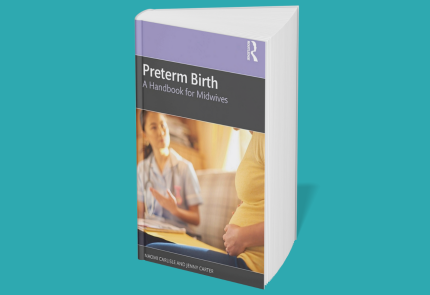Can you tell us a bit about your background, and how you ended up becoming a midwifery researcher?
While working clinically, I saw an advertisement for the NIHR funded MRes scheme (which has now been replaced by the pre-doctoral fellowship). I decided to apply and luckily was successful. This really opened my eyes to the possibility of having a clinical academic career.
Upon completion I landed a role as a research midwife, before deciding to undertake the next step in the NIHR pathway and applying for the Clinical Doctoral Research Fellowship. I've very recently finished my PhD fellowship, and now work as a midwifery lecturer at King's College London (KCL). I really do recommend the NIHR fellowships for enabling you to have that time and space to develop your clinical academic career.
What sort of challenges do midwifery researchers encounter?
For me, I would say that any clinical academic faces a juggling act of managing their research, clinical work and education/teaching. I am no expert, but my advice would be to accept that you cannot do it all, and that you cannot be an expert in everything!
In your opinion, where are the gaps in midwifery research that require more attention?
There are so many gaps and areas that require research, which is why maternity research is such an exciting area to be involved in. An area that immediately springs to mind is that there are still variations and disparities in maternity care across the country, especially for women from some ethnic minority (global majority) backgrounds and those living in socially deprived areas. Reducing these variations should be a priority area for all researchers.
What are the most exciting developments in midwifery research currently?
This is a difficult question! If I had to pick one... Zoe Vowles is a midwife at KCL undertaking a PhD on models of care for women with multiple long-term conditions. She is doing this through a NIHR Fellowship, and I'm excited to see what comes of this important work.
What strategies do you recommend for integrating evidence-based practices into midwifery care?
Alongside the usual best practice of ensuring that you are aware of your local and national guidance, I would say 'remain curious'. Continually question what you do and why you do it.
What is the role of the midwife when it comes to addressing health disparities in maternal care?
Social and structural factors such as poverty and racism compound health inequalities and contribute to disparities in care. Midwives can help reduce this is numerous ways, including listening to women and their families, providing individualised care, and ensuring that women are able to access and navigate services.
You and your colleague, Dr Jenny Carter have recently written Pre-term Birth: A Handbook for Midwives. How was the experience of co-authoring this, and what are your hopes for the book?
I was keen to get involved in this project as one of my PhD findings was that clinicians (especially midwives) knowledge regarding preterm birth could be improved. My hopes are that this book provides an easy to access resource for busy midwives who want to know more about the rapidly expanding field of preterm birth. Hopefully, if midwives feel more confident in caring for women at risk of preterm birth, then there will be less variations of preterm birth care.
